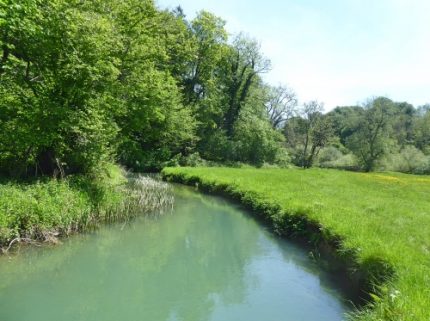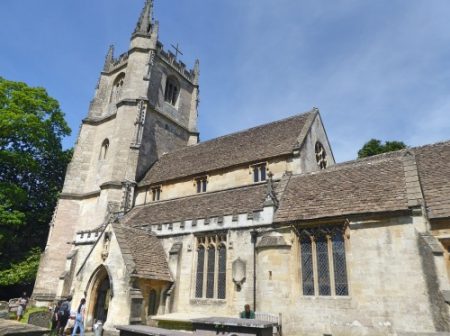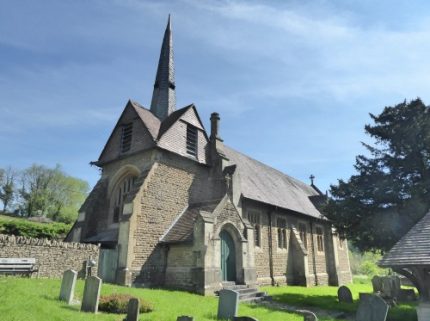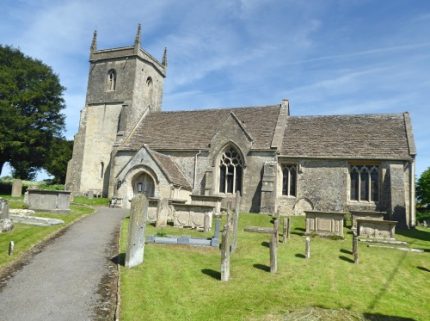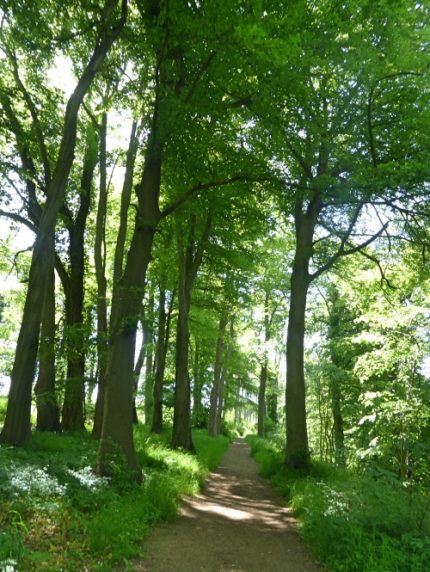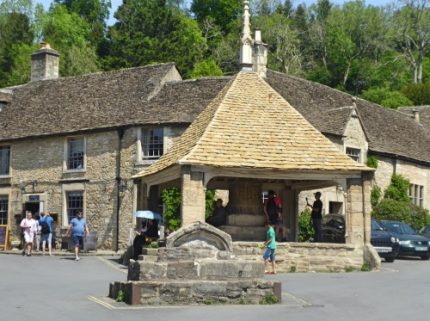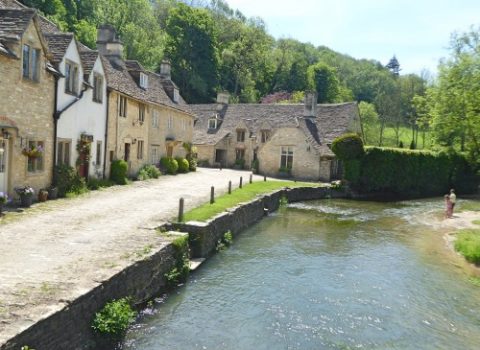Nigel Vile's Castle Combe Walk
Distance: 7 miles, Time approx 3 – 4 hours
Map: OS Explorer 156 Chippenham & Bradford-on-Avon
Terrain: Several moderate ascents. Muddy paths following heavy rain.
When thinking of pilgrimages, the Camino de Santiago immediately springs to mind, as does the story of the 29 pilgrims making their way to the grave of St Thomas Becket immortalised in Chaucer’s ‘The Canterbury Tales’. There were pilgrimages much closer to home, however, including one between the abbeys at Malmesbury and Glastonbury. This one is thought to have passed the religious sites at both Castle Combe and North Wraxall, whose churches dedicated to St Andrew and St James are both visited on this walk, a route that also passes St John’s Church in Ford, now de-consecrated and a private residence.
A more tenuous pilgrimage link is associated with St Aldhelm, one-time Bishop of Malmesbury. Following his death in 709AD at Doulting, between Frome and Shepton Mallet, his wishes were respected and his body was carried back to Malmesbury for burial. At intervals along the way, stone crosses were erected, with remnants existing at Colerne, Littleton Drew and Upper Wraxall. It is possible that the venerable saint’s body continued onto both North Wraxall and Castle Combe. As the Malmesbury History Society say: ‘We are unlikely ever to trace the exact route but there is plenty to fascinate historians and pilgrims along the way’.
The walk starts from St Andrew’s in Castle Combe, originally founded in the 13th-century, with the nave being a 14th-century addition and the tower being completed some 200 years later. It was built from the wealth of local wool merchants, in particular monies from the will of one Sir John Fastolf. At the base of the tower stands a faceless clock, believed to have been made by a local blacksmith, which is among the most ancient working clocks in the country. On the north side of the church is a superb monument of a Norman Knight – Sir Walter de Dunstanville, Baron of Castle Combe, who died in 1270, with his crossed legs indicating that he went on two crusades.
From Castle Combe, the By Brook Valley is followed through to Long Dean, described by Nikolaus Pevsner as ‘a pretty group of mill and 18th-century cottages in a combe’, a succinct description of what is a perfect rural idyll. A hilltop path with fine views follows and so onto Ford, where the White Hart is a former coaching inn on the road west from London. Cary’s Itinerary of 1841 lists Ford as the stopping point for visitors to William Scrope Esquire of Castle Combe Manor and Sawyer Esquire of Lucknam Grove. There is also the de-consecrated St John the Evangelist Church with its little shingled spirelet and wagon roof. Internally Pevsner wrote of a screen that reaches right up to the start of the roof and a stained glass window by Messrs Morris & Company of 1913.
The Old Coach Road brings the walk to North Wraxall, a pleasant enough place, whose setting is enhanced by its location on a hillside above an unnamed tributary stream of the By Brook. A steep hill, lined with attractive cottages, climbs up to the parish church of St James. Arthur Mee wrote of the beauty of the doorway here that must have delighted travellers for 800 years. He noted how it stood beneath a 14th-century porch which seemed to be falling down with age that was decorated with a pretty timber frieze. Internally, look out for a side chapel that contains the earthly remains of Paul Methuen. He rests alone in the middle of the floor, in a white marble tomb, with 35 painted shields looking down on him from the ceiling above.
The return to Castle Combe initially follows quiet lanes as far as Truckle Hill Barn, where dramatic views open up across the local wooded valleys. Secretive woodland paths bring us back to the village, where the view along the main street from the By Brook to the Market Cross has featured on any number of calendars, magazine covers and movies on the big screen. These range from the 1967 version of Dr Doolittle through to the 2011 film War Horse. Above all, however, it is the beautiful natural landscape of the Southern Cotswolds that will remain in the memory following this walk. I am reminded of that verse in Genesis: And God saw every thing that he had made, and, behold it was very good.
